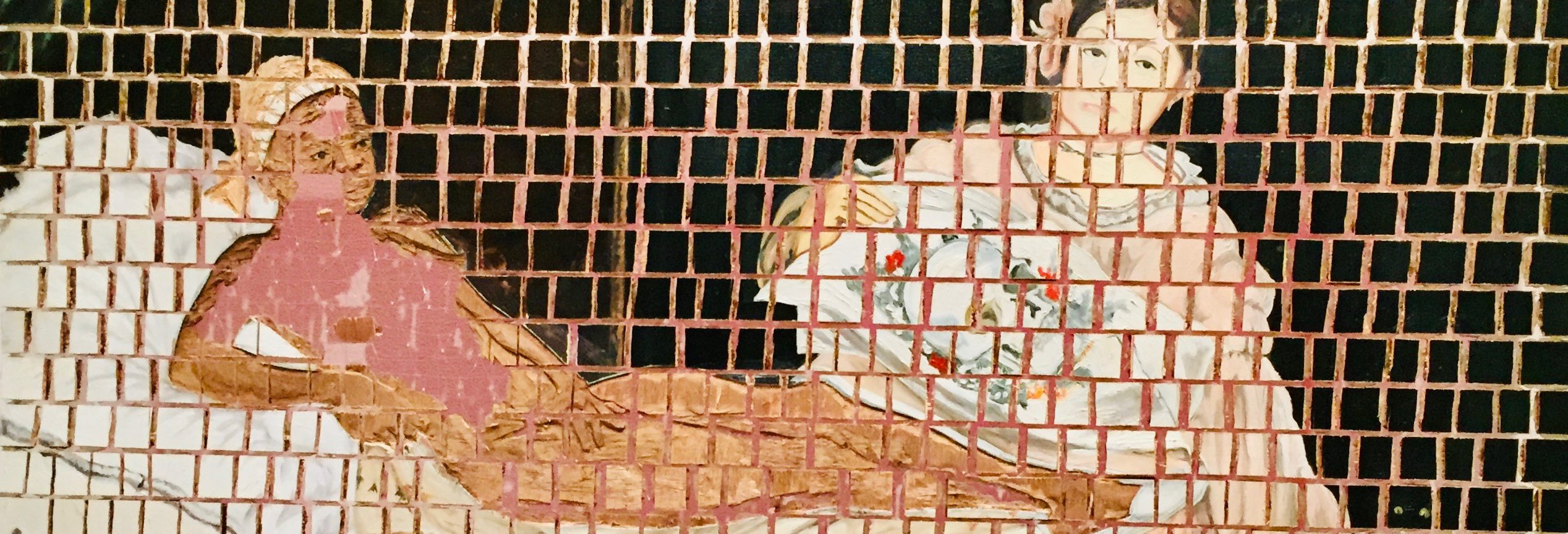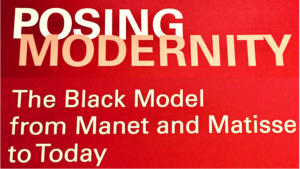
Posing Modernity: The Black Model from Manet and Matisse to Today is moving to the Musée d’Orsay in Paris but you can see it now in NYC.
It’s at the Wallach Art Gallery at Columbia University until February 10th 2019.
Just go up – or down – on the 1,2 or 3 train to 125th Street and you’re there. It’s free, worth every penny, and includes a ride in a bright orange elevator.
The exhibit takes you though several rooms and eras and includes more than 100 paintings, sculptures, photographs and works on paper.
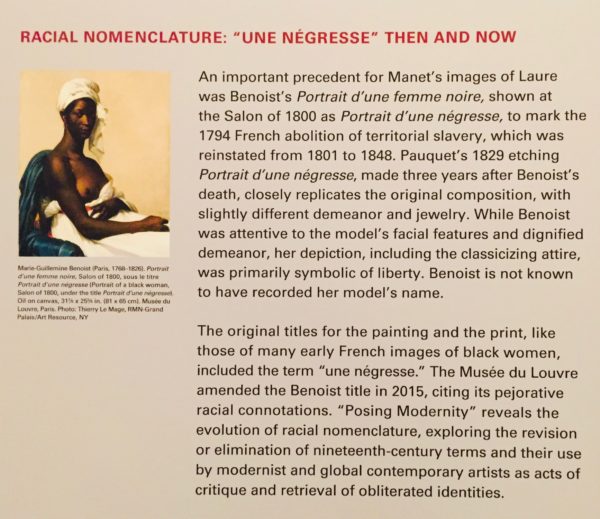 It starts with a consideration of words we use and then immerses the visitor in the Paris of Édouard Manet’s Olympia (1863).
It starts with a consideration of words we use and then immerses the visitor in the Paris of Édouard Manet’s Olympia (1863).
It suggests this painting was the beginning of an evolving shift in the portrayals of black women.
The exhibit ends with Manet revisited in a contemporary global context.
The Paris version of the exhibit will be enhanced with additional works but right here, now, in the NYC version we can experience a terrific social journey as reflected through art.
Posing Modernity focuses specifically on the black female figure, beginning with Edouard Manet’s 1860s portrayals of Laure, the model who posed as the maid in Olympia.
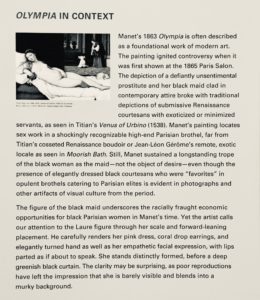
The curator of the exhibition in New York is Denise Murrell, Ph.D., Ford Foundation Postdoctoral Research Scholar, Wallach Art Gallery at Columbia University. She’s done an outstanding job.
Murrell’s starting point was a History of Art class she took at Hunter College where Manet’s painting Olympia was in the slide show but no reference was made to the black maid with the bouquet who occupies a large portion on the right of the painting.
Researching Manet’s studio notebook, Murrell found a 1862 reference to the model he described as “Laure, très belle négresse.”
It gave an address that was a 10-minute walk from the artist’s studio in the Batignolles district of northern Paris where many of the impressionists lived. It was also home to recent black migrants after the French abolition of territorial slavery in 1848.
The exhibit was unable to get Olympia for the show but Laure is represented by another of his works:

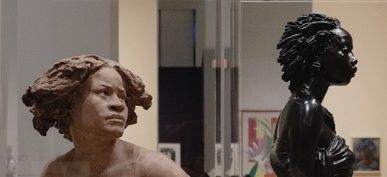 The exhibit first explores representation of black women in the work of Manet and his contemporaries including Frédéric Bazille, Edgar Degas and the photographer Nadar. There are two remarkable head sculptures by Charles Henri Joseph Cordier and Jean-Baptiste Carpeaux.
The exhibit first explores representation of black women in the work of Manet and his contemporaries including Frédéric Bazille, Edgar Degas and the photographer Nadar. There are two remarkable head sculptures by Charles Henri Joseph Cordier and Jean-Baptiste Carpeaux.
From there to the Harlem Renaissance, Henri Matisse, Romaire Beardon and into our own time. That last room shows this from 2018.
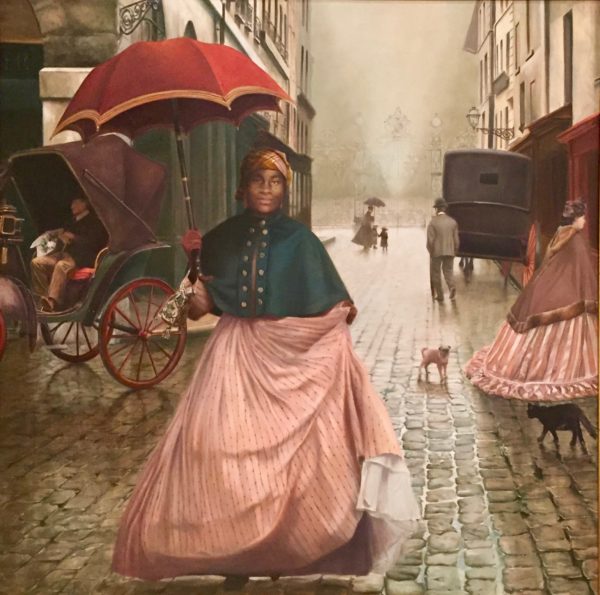
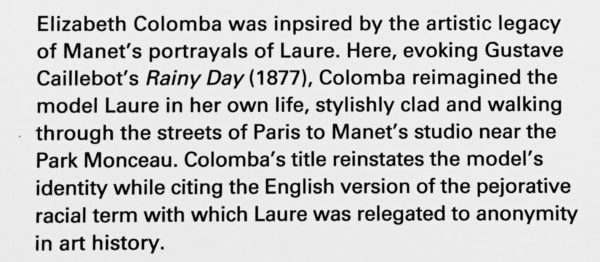
I was very taken with this portrait of Anna Washington Derry by Laura Wheeler Waring. Look at that face!
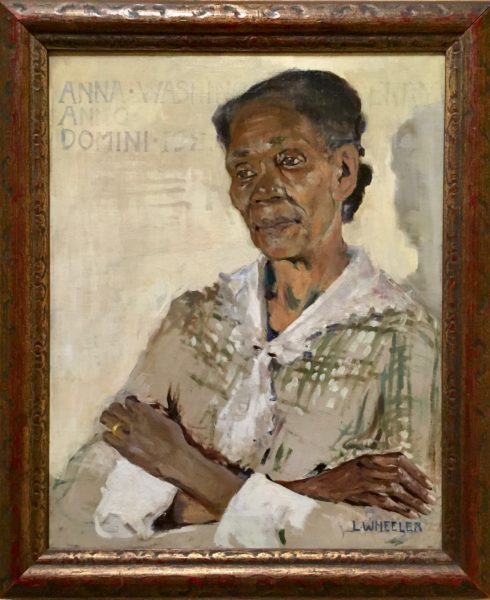
The representations move the black female model from the marginalized, sexualized and exotic “other” to the center.
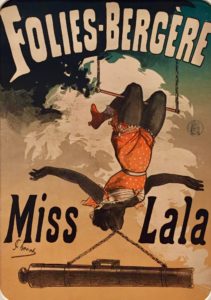
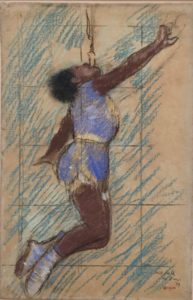
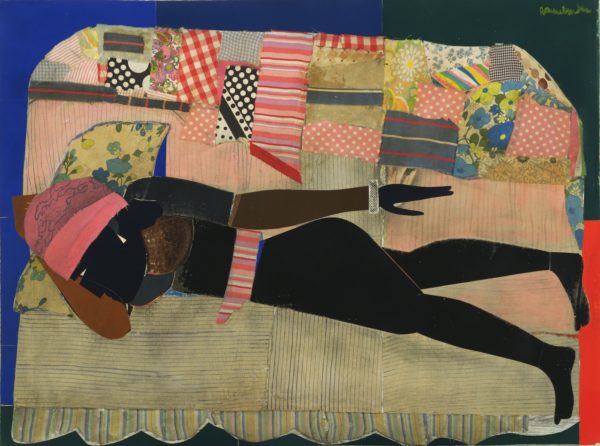
In addition to the Elizabeth Colomba (above), the last room includes work by a number of contemporary artists. I was very taken by this light and shadow work by Aimé Mpane:
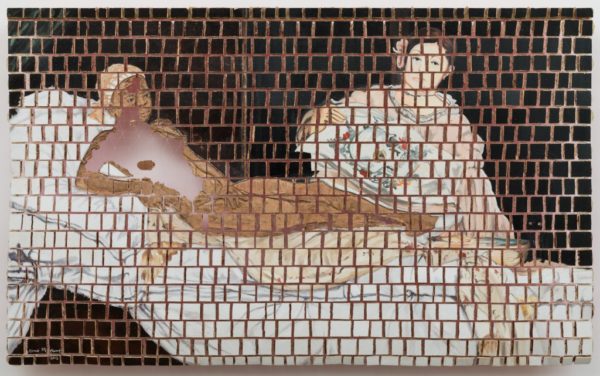
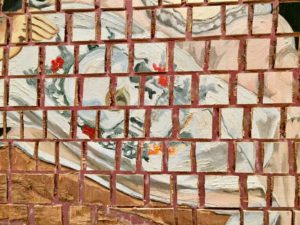
It’s composed of chips of layered plywood and absence of chips. The reclining figure is approached by a white maid with a floral bouquet that shows a skull – an offering of death that the black figure would be wise to contemplate with some caution. It’s a pointed commentary colonialism, history and on Manet’s Olympia.
The plywood chips are suspended and behind the work at the top there is a bright red bar. The light creates an eerie shadowy effect as if the figures are behind a latticed curtain. Looked at from a distance it appears to be a mosaic.
Here’s a side view showing, in part, how the effect is created.
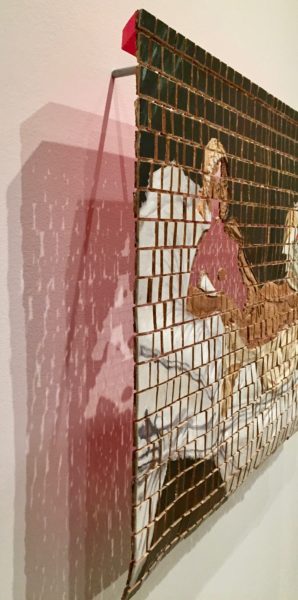
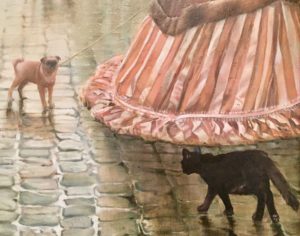 When Columbia University expanded its campus northwards into Harlem it was a cause of considerable neighborhood concern. The Lenfest Centre for the Arts is right there north of 125th street.
When Columbia University expanded its campus northwards into Harlem it was a cause of considerable neighborhood concern. The Lenfest Centre for the Arts is right there north of 125th street.
